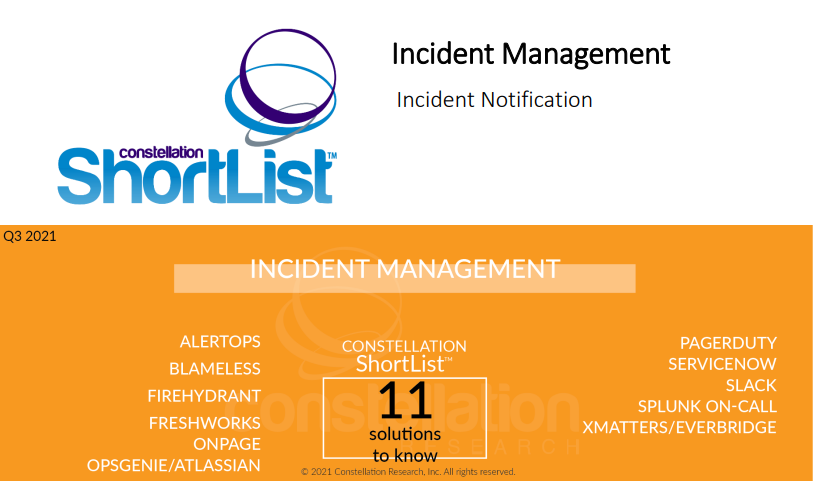
Report: Constellation ShortList™ Incident Management
Summary
About This Constellation ShortList™
Unplanned downtime is a nightmare for every IT executive. Long-drawn war rooms drain valuable resources and businesses lose opportunities and risk brand damage. Particularly with many choices and alternatives for any service, reducing churn by providing reliable services is a top agenda for any digital business. Having siloed teams, siloed monitoring/observability tools, multi-cloud operations, hybrid locations, blend of legacy, shortage of skilled IT analysts, and new tools all add to the issue.
While a lot of organizations invest a lot of money in observability and monitoring solutions, still the incident triaging and resolution is a very manual process in most organizations. A perfect system should consume alerts from multiple sources, identify the root cause (with the help of AIOps), route the incident and appropriate actions to the responsible resource, provide a detailed context and possible solutions to the incident, and potentially automatically resolve the issue if possible. These systems should also be able to properly prioritize, based on business context and value, and assign/escalate the incident based on that. In other words, while observability, monitoring, and AIOps can help identify the incident and the root cause faster, incident management allows for resolving the matter quickly.
Threshold Criteria
Constellation considers the following criteria for these solutions:
- Automatic incident triaging to reduce manual toil
- Automated incident response
- Business context-based incident escalation
- Event intelligence ingestion
- Incident prioritization and proper assignment
- Centralized on-call management
- DevOps tools integration
This report was originally published in Constellation Research library and available to all Constellation Research subscribers.








